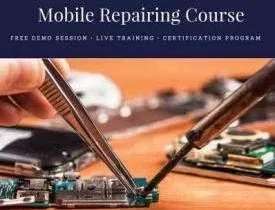Description
Course Name: Diploma in Construction Supervisor
Course Id: DCS/Q0001.
Education Qualification: 10th.
Duration: 370 Hrs.
How You will Get Diploma Certificate:
Step 1- Select your Course for Certification.
Step 2- Click on Enroll Now.
Step 3- Proceed to Enroll Now.
Step 4- Fill Your Billing Details and Proceed to Pay.
Step 5- You Will be Redirected to Payment Gateway, Pay Course and Exam Fee by Following Options.
Card(Debit/Credit), Wallet, Paytm, Net banking, UPI and Google pay.
Step 6- After Payment You will receive Study Material on your email id.
Step 7- After Completion of Course Study give Online Examination.
Step 8- After Online Examination you will get Diploma Certificate soft copy(Scan Copy) and Hard Copy(Original With Seal and Sign).
Step 9- After Certification you will receive Prospect Job Opportunities as per your Interest Area.
Online Examination Detail:
- Duration- 120 minutes.
- No. of Questions- 60. (Multiple Choice Questions).
- 10 Questions from each module, each carry 10 marks.
- Maximum Marks- 600, Passing Marks- 40%.
- There is no negative marking in this module.
| How Students will be Graded: | ||
| S.No. | Marks | Grade |
| 1 | 91-100 | O (Outstanding) |
| 2 | 81-90 | A (Excellent) |
| 3 | 71-80 | A (Very Good) |
| 4 | 61-70 | B (Good) |
| 5 | 51-60 | C (Average) |
| 6 | 41-50 | P (Pass) |
| 7 | 0-40 | F (Fail) |
Benefits of Certification:
- Government Authorized Assessment Agency Certification.
- Certificate Valid for Lifetime.
- Lifetime Verification of Certificate.
- Free Job Assistance as per your Interest Area.
Syllabus
Diploma in Construction Supervisor
Construction Material and Practices
Brick work :- Varieties sizes and manufacturing of bricks, Burning of bricks common types of kilns. Special purpose and facing bricks, Characteristics of good bricks and methods of testing them on works, Terms used in brick work :- Stretched and header, Closer, English bond. Flemish bond, Arrangement of bricks in course for half, one, one and half and thicker brick-walls and at intersections, Brick-walls :- Relationship between thickness and length and height, practical rules for determining, thickness of external walls cross walls, party walls and partition walls. Footing, Brick-piers, Jambs, Opening in brick-walls Laptops Relieving Arches Cavity walls.
Estimating and Costing
Calculation of quantities and methods of taking out quantities, Calculation of quantities of materials of different items of construction Preparation of detailed estimate Types of forms used in estimate Preparation of Rate Analysis for different items of construction works, Tender and Tender documents Conditions of contract Specifications of different items of the work To prepare estimation and costing of a small residential structure, Definition of approximate estimate, Uses of Approximate Estimate, Preparing Approximate Estimate for Building Methods of preparing Approximate, Estimate for Buildings, Plinth Area Method, Definition of Detail Estimate.
Surveying and Leveling
Introduction and principles of surveying and leveling, Study of Surveying instruments, Study of Leveling instruments, Methods of surveying, Types of leveling, Use of chain and tape for surveying building sites, Leveling and elementary idea of contours, Use of dumpy level and buildings level, Definition of Surveying, Types of Survey: Plain Survey & Geodetic Surveying, Fixing of stations; points to be observed in selection of station, Ranging – Direct, Indirect and reciprocal ranging, to set up intermediate points between stations. use of ranging rod in ranging, use of Line Ranger in ranging. Procedure of chaining between two stations. Entering in Field Book, Error in chain – Meaning of terms – chain is too long and chain to too short.
Construction Equipment
Identification – Planning of equipment – Selection of Equipment – Equipment Management in Projects – Maintenance Management – Equipment cost – Operating cost – Cost Control of Equipment – Depreciation Analysis – Replacement of Equipment- Replacement Analysis – Safety Management, Fundamentals of Earth Work Operations – Earth Moving Operations – Types of Earth Work Equipment – Tractors, Motor Graders, Scrapers, Front end Waders – Dozer, Excavators, Rippers, Loaders, trucks and hauling equipment, Compacting Equipment, Finishing equipment. Equipment for Dredging, Trenching, Drag line and clamshells, Tunneling – Equipment for Drilling and Blasting – Pile driving Equipment.
Project Formulation & Appraisal
Project – Concepts – Capital investments – Generation and Screening of Project Ideas – Project identification – Preliminary Analysis, Market, Technical, Financial, Economic and Ecological – PreFeasibility Report and its Clearance, Project Estimates and Techno-Economic Feasibility Report, Detailed Project Report – Different Project Clearances required, Project Financing – Means of Finance – Financial Institutions – Special Schemes – Key Financial Indicators – Ratios. Private sector participation in Infrastructure Development Projects – BOT, BOLT, BOOT – Technology Transfer and Foreign Collaboration – Scope of Technology Transfer.
Statistical Methods For Engineering
Estimators: Unbiasedness, Consistency, Efficiency and Sufficiency – Maximum Likelihood Estimation – Method of moments, Tests based on Normal, t, X2 and F distributions for testing of means, variance and proportions – Analysis of r x c tables – Goodness of fit. Multiple and Partial Correlation – Method of Least Squares – Plane of Regression – Properties of Residuals – Coefficient of multiple correlation – Coefficient of partial correlation – Multiple correlation with total and partial correlations – Regression and Partial correlations in terms of lower order co-efficient. Analysis of variance – One-way and two-way classifications – Completely randomized design – Randomized block design – Latin square design.






